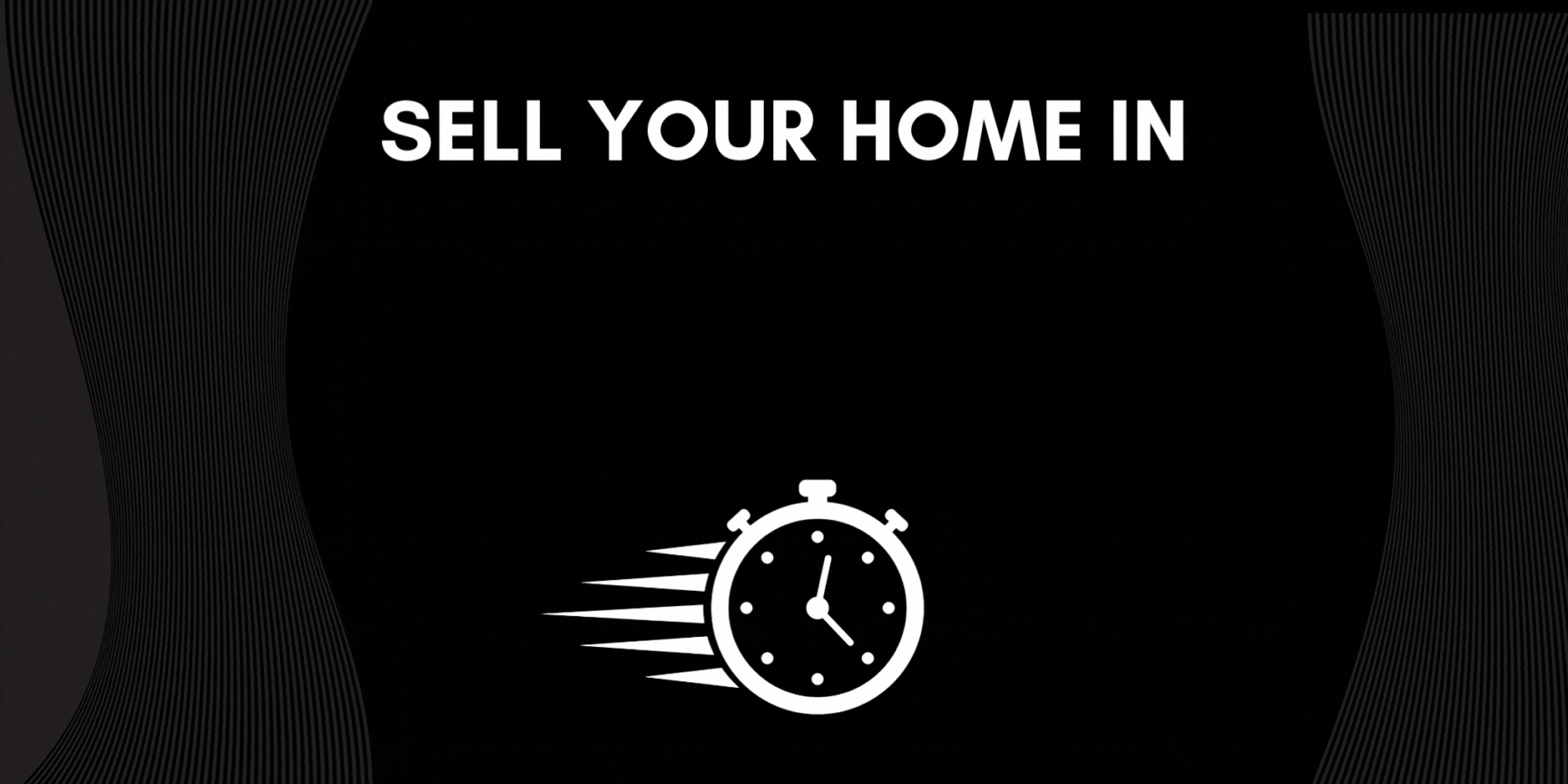I often tell my clients that one of my most important jobs as a REALTOR is to help the seller set the right list price for their home when they put it on the market. However, the house doesn’t belong to me – it’s their house, and ultimately, they set the price at which they want it put on the market. And, to be honest, I am not infallible, and on rare occasion the price that I recommend turns out to be too high in retrospect. Whatever the reason, the truth of the matter is that doing price reductions are a fact of life for any long-experienced REALTOR like myself.
But how do you know when you need a price reduction? I’ve written another article that addresses that very question. While there is no one right answer, the short answer is that if your home isn’t selling while other similar homes in the market area are, it’s a good bet that you need to reduce the price.
Many sellers are reluctant to lower the list price price. “We only need one buyer” is a common refrain, and many sellers prefer to wait for that one buyer to come along. But then, once the rust starts to form on the “For Sale” sign and the seller starts to get antsy, the necessity of a price cut becomes clear. But how much should you reduce the price?
It’s not surprising that most sellers will want to do only a small price reduction. “Small” is a relative term, and could be $5,000, or 1%, or 3%, or who knows. When a home is overpriced, the truth is that any price reduction, even a tiny one, is better than no price reduction at all. It will cause the listing to get refreshed in the email boxes and apps of buyers who are tracking the home. It also signals to the market that the seller is at least a little more motivated to sell. This can help get buyers in the door, which is a critical step in the ale process.
The problem with a small price reduction – again, depending on how small – is that it typically is not enough of a reduction to get the property into the range where the right buyers are looking for a home that has the value proposition that yours does. And if you aren’t in that range, the price reduction probably won’t give you the results that you’re looking for. That will necessitate further price reductions – and trust me, they don’t get any easier as the list price drops lower.
Chasing the market down through a series of price reductions is perhaps the least enjoyable part of any selling experience, and should be avoided like the plague.
Alternatives to a Price Reduction
When a home isn’t selling as quickly as expected, many REALTORs believe that reducing the price is the only solution. However, there are several alternatives to consider before making that move. Here are some things you can try in lieu of a price reduction:
- Enhancing the home’s appeal with professional staging
- Improve lighting (especially natural light)
- Paint, carpet (or other flooring)
- Improve curb appeal (landscaping)
- Updating (or removing bad) photos
- Adding a virtual tour
- Offering buyer incentives (like covering the buyer’s closing costs)
- Providing a multi-year home warranty
- Offering to pre-pay HOA fees for the buyer for 1-3 years
- Including new high-end and/or energy efficient appliances
- Revisiting your marketing strategy, highlighting unique features & adjusting the listing description
- Increasing online visibility through paid ads on Facebook, Instagram, Google, YouTube, TikTok and others
- More open houses (on weekdays, twilight open houses, etc.).
All of these are great ideas, and depending on the current price, your market, and the feedback you’ve received thus far, any or a combination of all of the above could be just the ticket to get a great offer in short order.
The operative word being could. However, none of these things will work as quickly, or as surely, as the right price reduction. The bitter truth is that the price reduction is the single greatest marketing tactic ever invented.
Why Small Price Reductions Are Usually Ineffective
To understand why small price reductions rarely do the trick, it’s important to understand how buyers search for property. Buyers search in ranges of prices, and those prices begin and end on price bracket points.
Let’s say that you have a home listed for sale at $1,500,000 and it just isn’t getting much activity – for the past several weeks, you’ve had few showings, sparse open house attendance, and no offers. Clearly, a price reduction is in order – but how much of a reduction do you need?
Many sellers would want to do a $50,000 price reduction – taking the price down to $1,450,000. This is a reduction of 3.33% – which, while nothing to sneeze at, may not get the job done. One big problem with a reduction that size is that $1,450,000 is not a price bracket point.
Price bracket points are the beginning or ending price of the range that buyers are searching in. Here are some common price bracket points:
- $0-$500,000
- $0-$700,000
- $700,000-$1,000,000
- $1,000,000-$1,500,000
- $1,000,000-$2,000,000
- $1,500,000-$2,000,000
The problem of the 3.33% price drop down to $1,450,000 is that you are still in the same price bracket as when you were listed at $1,5000,000. Nobody is searching from $1M to $1.45M – they would all be searching from, say, $1M to $1.5M. Since this is the case, your listing is not going to be seen by any new buyers, since you haven’t changed your price bracket.
If, however, you dropped the price to $1,400,000 you would be in a new price bracket. All buyers searching for homes between $0 and $1,400,000 or $1M and $1.4M would find you. Not only that, the buyers who set a low price of $1.4M would find you too. Yes, some buyers do search with a bottom number greater than $0 – and if a buyer’s low number is $1.4M and their high number is $1.6M, you’d still be found at $1.4M … but a buyer with this bracket would not see your listing if you dropped the price to $1,395,000.
That’s why when it comes to price reductions, I am a firm adherent in the need to drop down to at least the next logical price bracket down, and to always price on one of those price bracket points. This way, you are assured that buyers who are searching both above and below that price point.
What if the Reduction Isn’t Big Enough?
In the above example, instead of reducing $50K, to my mind the minimal logical reduction would be $100K, down to $1.4M, a reduction of 6.67%. That’s a pretty good reduction, to be sure. It’s not a major reduction, but it would definitely work to get a lot more eyeballs on a listing than a $50K reduction.
But what if it isn’t big enough? What if you do this cut, and you wait another week, or two, or a month…and you get some more showings, open house attendance picks up, but you still don’t get an offer? What then?
Then – if you really want to sell your house – you are looking at either a) waiting some more, b) trying some of the tweaks I detailed above, or c) do another price reduction.
If your initial list price isn’t attractive enough to get offers in the timeframe you need it to, then a price reduction is all but inevitable. This will put you in the unenviable position of needing to chase the market down, as we say in the business. And believe me, chasing the market down, especially if you need a series of price cuts, makes for the absolute worst experience in selling a home. There is so much anxiety and stress and uncertainty to the process, making it a truly soul-crushing experience. Not to mention the financial drain of paying a mortgage, property tax, utilities, and upkeep on a home that you no longer want or need.
But there is another way: you can throw a price bomb and blow up the sale – in the best way possible. Allow me to share with you a massive price reduction case study that proves beyond a shadow of a doubt that the law of supply and demand is immutable and can be leveraged by any seller, for any property, to maximize the sale price in short order.
Massive Price Reduction Case Study
I’m like a broken record because I keep saying this: the price that you are able to sell your home for is dictated to a very large extent by the law of supply and demand. When you have a home that is listed for sale at a price that’s too high, you’re putting it into a market segment where there is relatively abundant supply (other overpriced homes that are not selling) and low demand (few buyers are interested in making offers on overpriced homes).
Conversely, you can exploit the law of supply and demand in your favor: you can price you home where there is a relatively low supply of homes that offer a similar value proposition to yours. There, you will typically find a much greater supply of buyers who are willing to write offers on attractively priced homes.
And what happens when there is low supply and high demand? You know the answer, because you know what the law of supply and demand tells us: the price goes up.
It’s important to note that they call it the law of supply and demand because it is a law. Like the law of gravity, or Newton’s laws of motion. Laws like these apply everywhere, at all times. In real estate, the law of supply and demand exerts its inexorable force in all neighborhoods, price points, types of property, and in hot markets and cold ones. You simply cannot escape its effects.
The law of supply and demand is why Bay Area REALTORS will often say that there is no danger underpricing your home. That’s because if you do underprice your home, the market will quickly respond and buyers will begin making offers on the property. If you get multiple offers (and sometimes, even if you don’t), your Realtor, through deft negotiation, will be able to drive the price up to the highest price the market will bear at that time.
To illustrate that point, I’m going to share the inside scoop on a sale I had a while back.
Not long ago, I had a listing for a home in suburban neighborhood, at a time when inventory was overall fairly constrained (as has been typical in the Bay Area since 2011 or so). This was a unique home for several reasons:
- It was a manufactured home, which is almost unheard of in the area
- It was on a large-ish lot but but was deep(er) rather than wide(r).
- It was next door to a church
- It was on a street with no sidewalks
- There was no on-street parking
- The site only had 2 off-street parking (unless you drove vehicles into the back yard)
- The street was a thoroughfare with 35 MPH traffic.
The big wildcard was the manufactured home part. There were absolutely no comparable manufactured home sales, because in the Bay Area, almost all manufactured homes are sold on rented land (like in a mobile home park), not land that you own, like you would for any other stick built house. Given the lack of any comparable sales, coming up with an estimate of likely sale price was a challenge.
Another challenge was that the reason for the sale was the poor health of owners. The sale of the property was being handled by an adult daughter, who had power of attorney. The mother had cancer and was in very poor health; she entered hospice care shortly after listing agreement was signed, but passed away before the home went Active on the Multiple Listing Service (MLS) in early October. The father was also in poor health, and required a daily caregiver.
Due to the ongoing multiple health crisis, the house did not look its best. Yet the need to sell was urgent; the daughter lived out of state, and paying to provide care for the father was unaffordable. They needed to get the house sold and the father moved to live in a new house with the daughter in Idaho. For these reasons, showings had to be very limited; and the price had to be attractive to get enough buyers in the door quickly – and buyers who could overlook the less-than-immaculate presentation of the home.
But as I tell my clients: the list price and the sale price have almost nothing to do with one another, as 90-95% of the time, the sale price is higher or lower than the list price. My client understood that, and agreed to list the home for $1,250,000, which was below my guesstimate of fair market value of $1,350,000. I arrived at this price by studying the “comps,” (which were all stick-built homes), and by consulting with an appraiser. I asked the appraiser how much less a manufactured home would be worth compared to a stick-built home, and while there were no comps or any data to support this, she guessed that a 10% downward adjustment would be about right.
We figured a stick-built home on that size lot in that location would be worth $1.5M. 10% less than that gave us an estimate of $1,350,000, and we took another $100K off that to arrive at the $1,250,000 list price – which was about 7.5% below our estimate of fair market value.
Normally, if a home is priced 7.5% below what the market would identify as fair value, especially on a large-ish lot close to desirable amenities in a supply constrained-market, you’d get a lot of interest in the property right out of the gate.
How did the market react in this case? Response was tepid. We got some showings. We got some people at the open house. But we didn’t get any offers. It began to rain shortly after the home on the market, and several weeks after that, daylight savings time ended, so days were short with sunset around 5:30 every day.
We dropped the price down to $1,200,000 just before Thanksgiving – though Dad had just moved out, so the house showed a little better. With Dad and most of the furniture and clutter removed, the house showed better, so we took a full set of professional photos and created a video tour. But still, weeks ticked by, also with few showings and light open house attendance, and rain continued to fall on the parade.
But then, on Christmas Even of all days, we got an offer: for $1,050,000. Ouch. And we issued a counter offer, for $1,169,000. The buyer wasn’t having it, and walked away.
The seller was becoming discouraged, and said that if the property couldn’t sell, she would want to rent it out. She had me get some paint bids so the home could be repainted before finding a tenant, and asked for referrals to property managers. But I knew that she really wanted to sell the home, because that was the only way she could really meet the family’s objectives.
So I said, “I have a crazy idea. Before you rent it out, why don’t we just try a drastic price reduction, and see what happens?” I explained how the law of supply and demand would work to get multiple offers and quickly secure the best offer the market had. It actually wasn’t too hard to convince her to give this a try, as I was able to show several other sales nearby that had sold for double digit percentages over list price.
So we dropped the price to $900,000 on December 29th, after nearly three months on market. And even though it was the holidays, with rainy weather and dark, short days, the market kicked into action and did what it always does.
Negotiating the Best Price and Terms with Multiple Offers
Within a week, we got seven offers on the property – yes, the first week of the year, with the cold and the rain and the holiday craziness. We accepted an offer from a first time homebuyer, who initially offered $975K – but we played the buyers off each other and got them up to $1,125,000.
Unfortunately, those buyers backed out at the end of their five-day inspection period. There was no particular reason given for canceling – but they don’t need to have a reason, because with the inspection contingency, buyers can cancel for any reason, or no reason, and the seller cannot object.
So back on the market we went, after having the property fall out of contract, which is is never something you want to show on the property history which all buyers can see, as it raises questions about the desirability of the property (in addition to the multiple price reductions and high days on market).
But the law of supply and demand kept on working; within six days, we had received nine offers; some of them were from the previous batch of buyers, and some were new buyers who came into the mix in those six days. We ended up accepting an offer the second time around at $1,115,000 – which was just about 24% over list price. And this, on a property that had been on the market over three months, had multiple price reductions, was listed during the holidays, in often inclement weather…and was a highly unusual manufactured home with limited parking, on a busy street with no sidewalks.
And the interesting thing to note is that the winning buyer was…the very first buyer who initially offered $1,050,000 but who walked away from that $1,169,000 counter offer. His initial offer the second time around was the same $1,050,000 he’d offered back on Christmas Eve, but we needed the competition from market forces to get that buyer up to a price the seller would accept.
Interestingly enough, of those eight other offers he was competing with, five of them came in below the $900K list price, one was at list price, one was at $940K, another at $950K, and another at $980K. So at $1,050,000 that buyer was already the highest of the nine offers on the table, but we leveraged the fact that we had eight other offers to get him up to the $1,150,000.
Of course, we had tried to get all buyers up higher, and we did get several of them to increase their offer prices, and one other buyer did match the $1,115,000 price. But we had greater confidence in this buyer, as he had clearly had interest in the property for a long time. We had greater confidence in his desire to buy this property in particular, and his terms were otherwise superior to the competing high offer.
Epilogue
After the sale was finalized, I heard from some of the agents who had made offers on the property who were astounded that we were able to sell it for $1,150,000. “It’s a manufactured home!” was a common refrain. Yes – but what you’re buying isn’t so much the home itself, but rather, the location and lot size. As I tell my buyers: it’s the dirt. It’s always the dirt – and the amount of dirt, where the dirt is located, and how it’s configured (e.g. lot width/depth, etc.).
Yes, the property did sell for less than I had expected it to – but I didn’t have a high degree of confidence in my guess, owing to the utter lack of comparable sales data. But I never guarantee a seller any specific price – the only thing I can ever guarantee is that I will help you sell the property for the highest price the market will bear, whatever that turns out to be. My job – any REALTOR’s job – is to negotiate with buyers to suss out the maximum price and best terms of the deal that they have to offer. And that’s really all anyone can hope for, and I am confident that is exactly what my seller got.
The moral of the story is that regardless of the type of property, time of year, location, price point, or whatever other exception you think a property may have: no property is immune to the law of supply and demand. If you place your trust in this well-established fact of economics, and work with an ethical REALTOR who will work the buyers hard to squeeze the best price and terms from them, you can be well assured that you will absolutely get top dollar for your Bay Area home.
Check out these Great Homes for Multi-Generational Living
2
3
4
5
6
7
8
9
10
11
12
13
14
15
16
17
18
19
20
21
22
23
24
25






